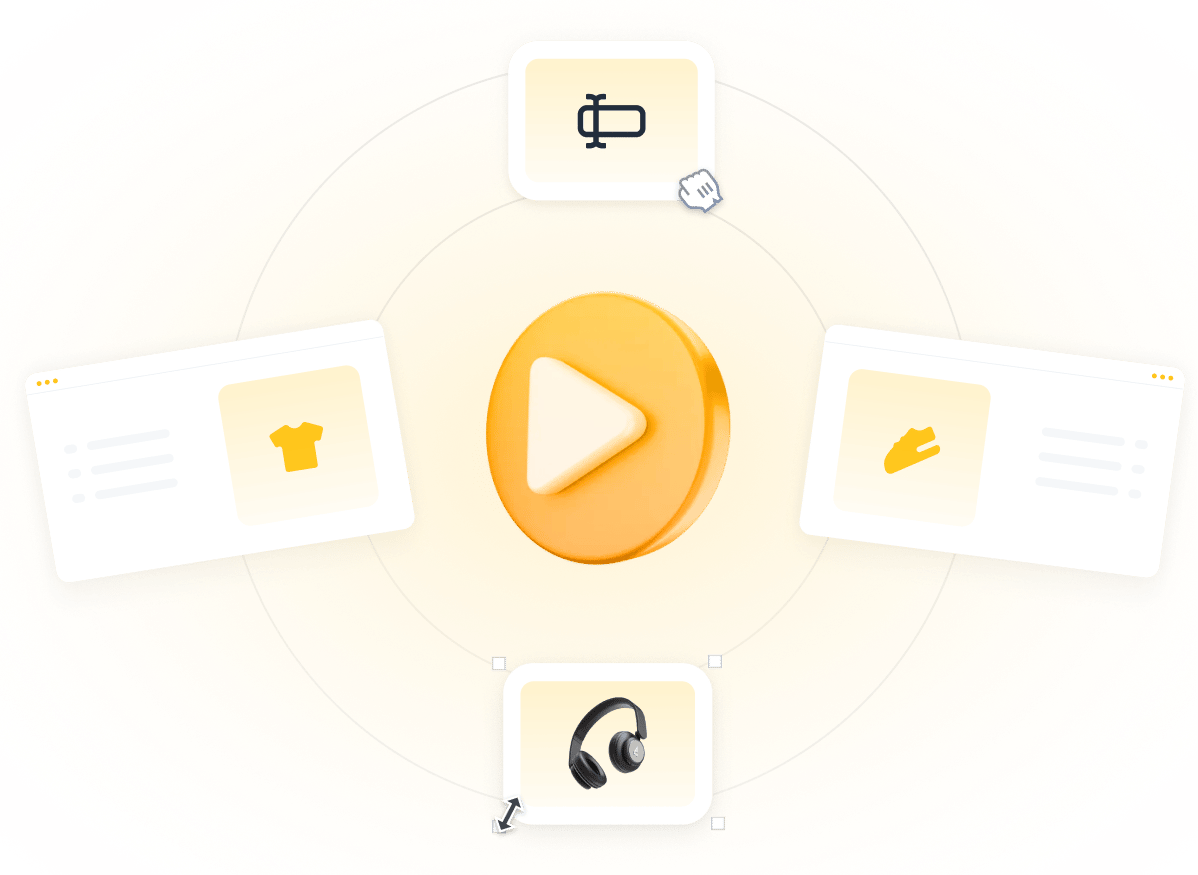
Lightfunnels Template
Submission Guidelines
Lightfunnels Template
Submission Guidelines
Submission Guidelines
To ensure your template meets our high standards and offers an outstanding user experience, please follow these comprehensive guidelines and best practices.
Lightfunnels Template
Submission & Guideline
Submission & Guideline
Unleash your creativity and start building beautiful templates that others can use to enhance their business.

Design & Originality
Template Originality
Your template should be distinct in style, avoiding replication of other templates on Lightfunnels or other marketplaces. While you can reference Lightfunnels templates and sections for inspiration, substantial changes must be made to ensure your template is unique and stands out.
Visual Design
Maintain a consistent design language across all pages, incorporating high-quality visuals, well-chosen typography, and balanced color schemes. The visual design should reflect modern aesthetics and appeal to a broad audience while aligning with specific niche requirements when applicable.
Typography
Implement a clear typographic hierarchy, using a limited number of fonts and sizes. This ensures readability and a professional appearance. Ensure that your typography adapts well to different screen sizes and maintains legibility across devices.

Functionality & User Experience
Global Funnel styles
Using global funnel styles ensures a consistent look and feel across all pages of your funnel. This feature not only maintains uniformity but also offers customization options, allowing template users to personalize their pages easily with just a click. Leveraging global funnel styles benefits both the template designer and the end users, enhancing the overall design experience and efficiency.
Data Binding
Data binding allows you to populate your pages with information from your product and account data. To fully leverage this feature, ensure that all the main data like (product price, product name, product reviews...) should be bound to the product, this will make it easy for the user to add and change the content on the template.
“Visible If” Condition
Conditional visibility should be applied to elements that depend on the presence of specific field values. This ensures that only relevant sections are displayed based on the data available.
Smart Sections
Implement smart sections to streamline content that appears across multiple pages (e.g., Navbars, footers, testimonials). Ensure these sections are fully functional and can be easily customized by end-users.
Flexible Layouts
Avoid Fixed Heights
Don’t assign fixed heights to containers or elements with dynamic content. Instead, use auto-height or responsive sizing to allow for natural expansion and contraction.
Use Padding & margins for Spacing
Manage spacing using padding and margins, rather than setting hard-coded heights, to maintain consistent and flexible layouts across different content scenarios.
Test with Varying Content
Ensure your template performs well with different content lengths by testing with both short and long content to avoid overflow or clipping issues.
Actions & Button Destinations
Link Verification
Thoroughly check all pages for unlinked or incorrectly linked destinations. Internal links, such as navigation and footer links, must point to their corresponding pages.
Process Testing
Conduct thorough testing of the entire funnel process—from the product page to the thank you page. Verify that each step works flawlessly, ensuring a smooth user journey without any broken links or dead ends.

Images, Icons, and Licenses
Proper Licensing
Templates can’t have any copyright-protected elements in them. This means no images, video/audio, graphics, or other material that another person or company has copyrighted. The best way to avoid this type of material is to use digital assets that you create or to use assets with a “creative commons” copyright license from sources

Responsiveness
Responsive Design
It is essential to ensure that the template adapts and displays correctly across different screen sizes. This can be achieved through responsive design techniques and careful testing on various devices.
Accessibility & Performance
Performance Optimization
Test your template for speed and performance using tools like Pagespeed Insights to ensure it performs well on both desktop and mobile.
Image Optimization
Use properly sized and compressed images to reduce load times without sacrificing quality.
Accessibility Standards
Ensure all elements are accessible, with proper contrast and legibility across all devices.

Template Listing & Details
Name
Preferably use a single-word, unique name that is easy to remember and distinguishes your template from others.
Avoid Duplication & ensure your template name is not already in use or too similar to existing names in the marketplace.
Description
Your template description must be concise, ideally limited to 25 words, and should accurately describe the main features and purpose of the template. Avoid vague or overly generic descriptions, as they won’t effectively communicate the unique aspects of your template.
Template Categories
Select categories that are directly related to your template. Avoid choosing too many unrelated categories, as this may result in the rejection of your template.
Features
- Minimum of Three Features: Each template must showcase at least three features, with a concise description of each limited to 25 words max.
- Visual Representation: Every feature should be paired with a corresponding image that is clean, appealing, and accurately represents the feature. The image resolution must be 1200x840px.
- Clear and Compelling: Ensure that feature descriptions are straightforward and highlight the benefits of the feature, not just the functionality.
Template Thumbnails
Thumbnails should follow the exact style we use for all templates on the platform to ensure visual consistency.
Proper Resolutions: Thumbnails should be of the required resolutions:
- Thumbnail Preview: 756x912px (Recommended file size < 200KB)
- Desktop Preview: 1252x1600px (Recommended file size < 1MB)
- Mobile Preview: 448x970px (Recommended file size < 200KB)
Use the provided Figma reference file to create your thumbnails:

Thumbnail File


Support
Template Support
As the owner of a template, you're responsible for addressing any issues reported by users who utilize your template. To ensure smooth communication, please provide your correct email address in your Lightfunnels Partners account information.
want to know more ?
Step-by-Step Video Series
This series provides a comprehensive, step-by-step guide on how to create, sell, and publish your Lightfunnels templates in the Lightfunnels Templates Store.
Check the Series



Frequently Asked
Frequently Asked
Here are some frequently asked questions.
What is the new template-selling feature?
How can I start selling my templates?
What percentage of sales will I earn from my templates?
Are there any specific guidelines I need to follow when creating a template?
What happens if my template is rejected?
How will I receive payments for my template sales?
Start Selling Now!
Start Selling Now!
Take the first step toward monetizing your designs. Explore our step-by-step series on how to create and sell your own templates.


Submission Guideline
Follow these comprehensive guidelines, to ensure your template gets approved.
Submission Guideline

Help & Support







